
Environment
19:43, 29-Apr-2019
China's experiment reduces emissions from cropland
Updated
10:05, 05-May-2019
CGTN
01:36
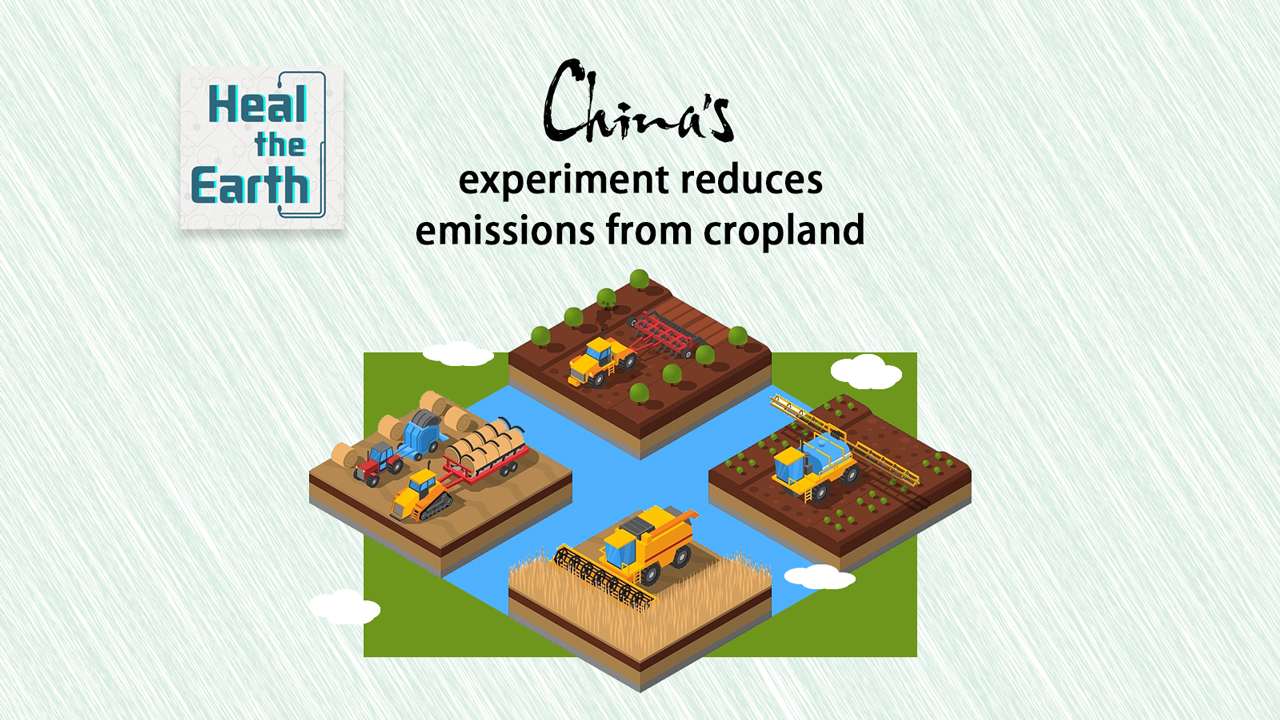
Chinese farmers have massively curtailed the use of nitrogen fertilizers, reducing greenhouse gas emissions, while managing to increase yield, a study found.
The feat comes after a decade-long experiment to control the growing carbon footprint of agriculture.
Globally, cropland has vastly contributed to the green cover, but the use of fertilizers remains a significant concern.
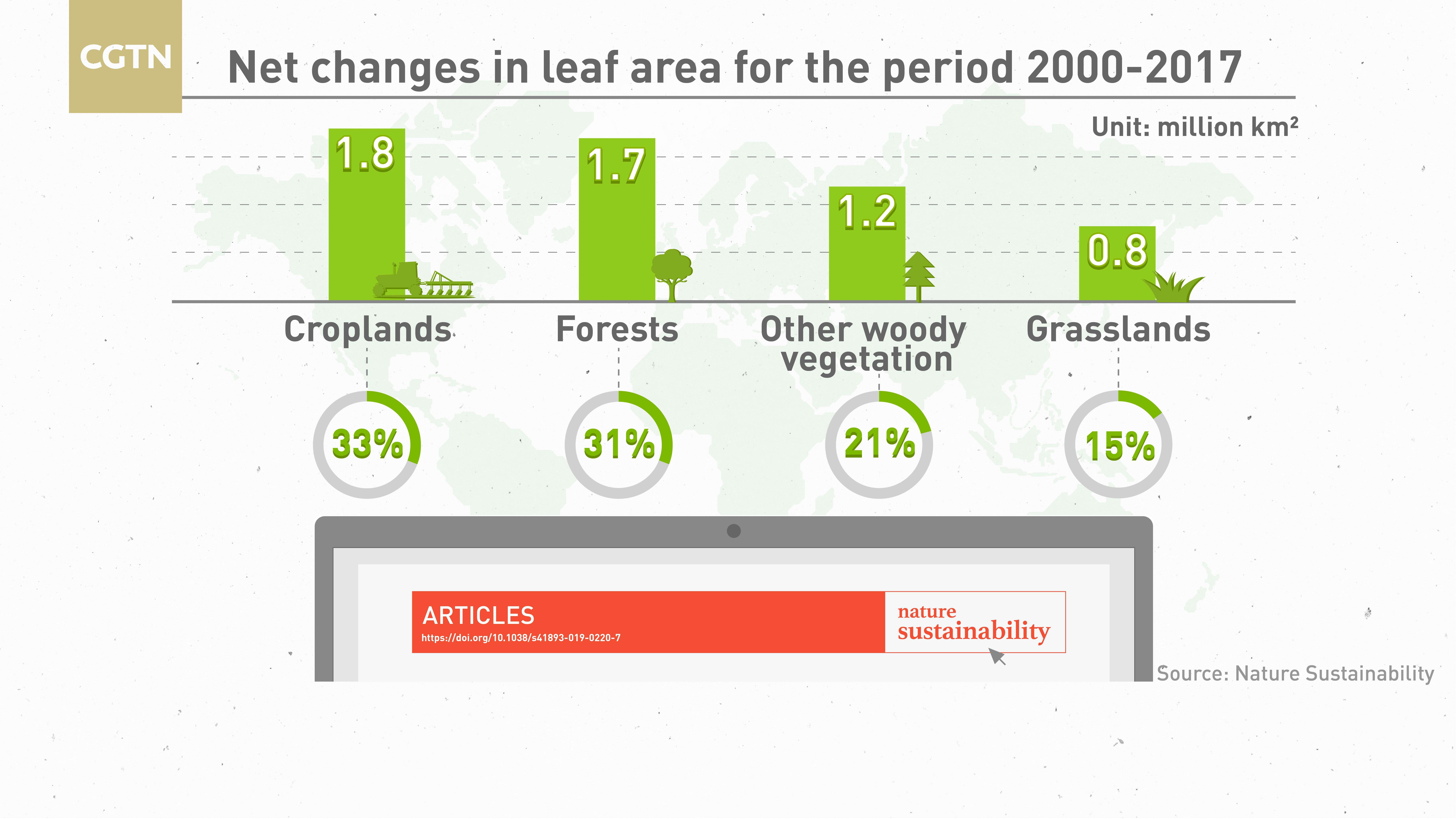
A graph showing croplands have been the biggest contributors to the global green leaf area since 2000. /CGTN Photo
A graph showing croplands have been the biggest contributors to the global green leaf area since 2000. /CGTN Photo
Farmers in China use nearly 305 kilograms of fertilizers per hectare per year, almost four times the global average.
Mostly made from nitrogen, phosphorus, and potassium, excessive use of fertilizers pollutes rivers, increases air pollution, causes acidification of soil, and also increases the cost of farming.
Concerned over such large-scale use, the country's premier research institute, the China Agricultural University, based in Beijing, launched a decade-long field trial to reduce and train farmers to reduce fertilizer use.
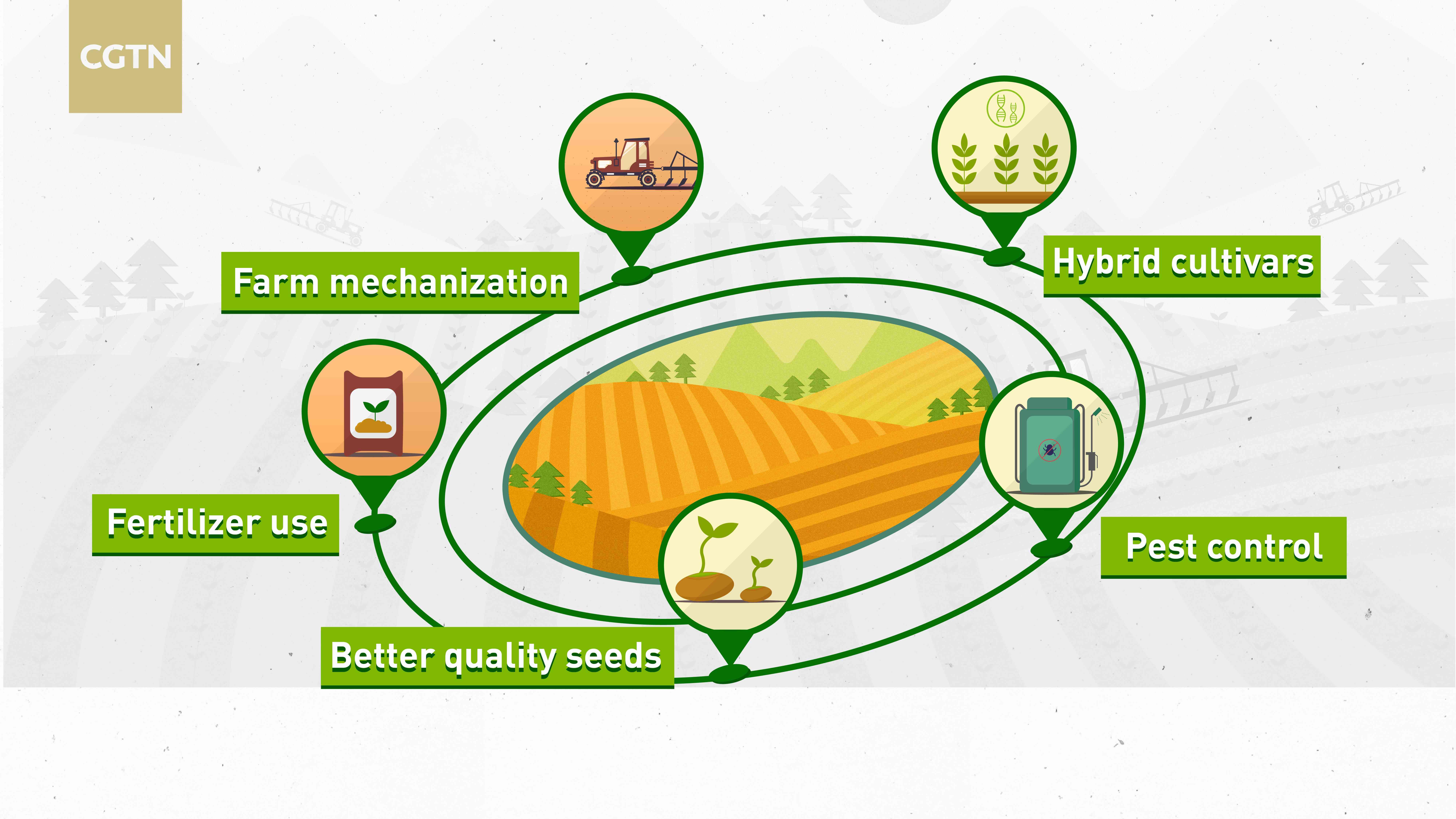
A graph showing China's increased agricultural efficiency. /CGTN Photo
A graph showing China's increased agricultural efficiency. /CGTN Photo
From 2005 to 2015, around 1,152 researchers reached out to more than 20.9 million smallholder farmers in 452 counties to introduce best agricultural practices using locally available resources.
The research project, led by Cui Zhenling from the China Agricultural University along with 45 academics, resulted in reducing nitrogen fertilizer consumption by 14.7 to 18.1 percent.
Researchers applied an integrated soil crop management system (ISSM) saving 1.2 million tons of nitrogen fertilizers.
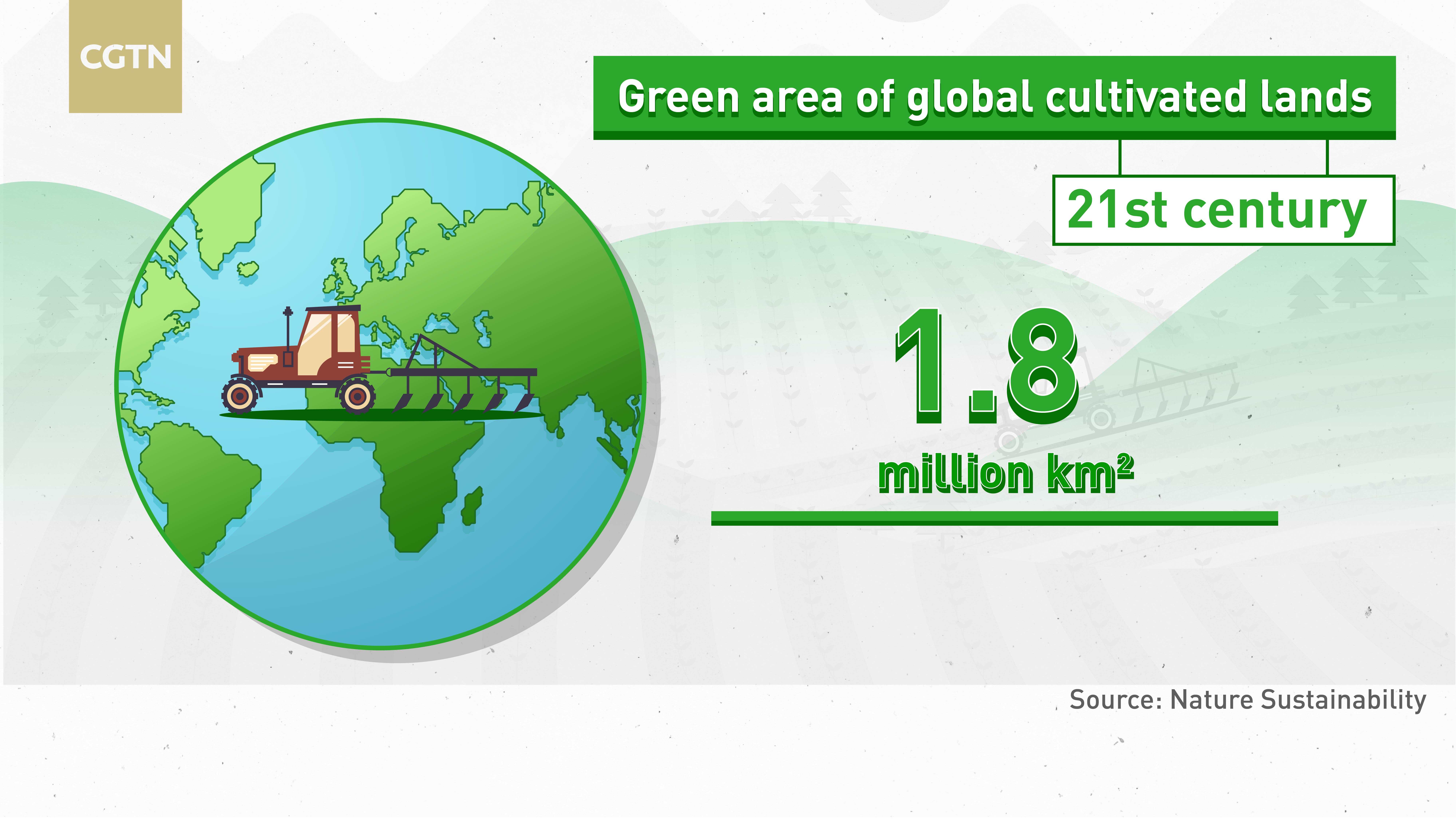
A graph showing croplands have contributed to 1.8 million square meters in green area, since the beginning of the 21st century. /CGTN Photo
A graph showing croplands have contributed to 1.8 million square meters in green area, since the beginning of the 21st century. /CGTN Photo
Despite a massive reduction in fertilizer use, "average yields of maize, rice, and wheat increased by 10.8 to 11.5 percent, generating a net grain output of 33 million tons," according to the report.
"The increased grain output and decreased nitrogen fertilizer use were equivalent to 12.2 billion U.S. dollars," researchers noted in the study titled "Pursuing sustainable productivity with millions of smallholder farmers" published in the journal Nature.
"This was a massive, nationwide, multi-layered collaboration," Zhengxia Dou, professor of agricultural systems at the University of Pennsylvania's School of Veterinary Medicine said. The university teamed up with researchers in China for the project.
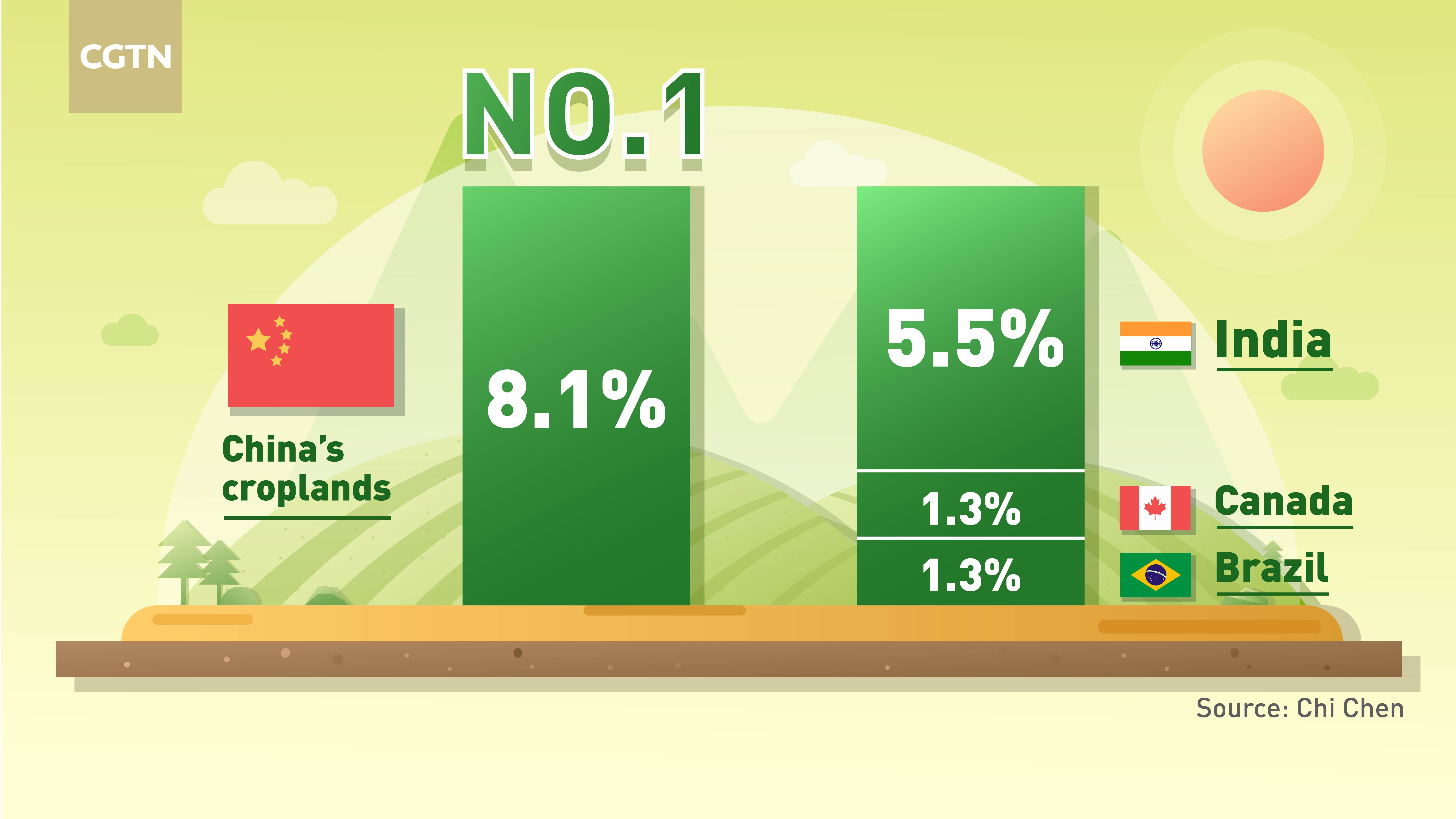
A graph showing China's croplands account for 8.1 percent of global greenery, equivalent to the contribution rates of India, Canada and Brazil combined. /CGTN Photo
A graph showing China's croplands account for 8.1 percent of global greenery, equivalent to the contribution rates of India, Canada and Brazil combined. /CGTN Photo
Globally, fertilizers are used for boosting food production, which is expected to increase by 60 to 110 percent over 2005 levels by 2050 to feed the world's population.
Researchers contributing to the project believe project findings can be applied to other Asian countries struggling to control the use of fertilizers.
"The extent of the improvement in terms of yield increase and fertilizer decrease was great," Dou added.

SITEMAP
Copyright © 2018 CGTN. Beijing ICP prepared NO.16065310-3
Copyright © 2018 CGTN. Beijing ICP prepared NO.16065310-3